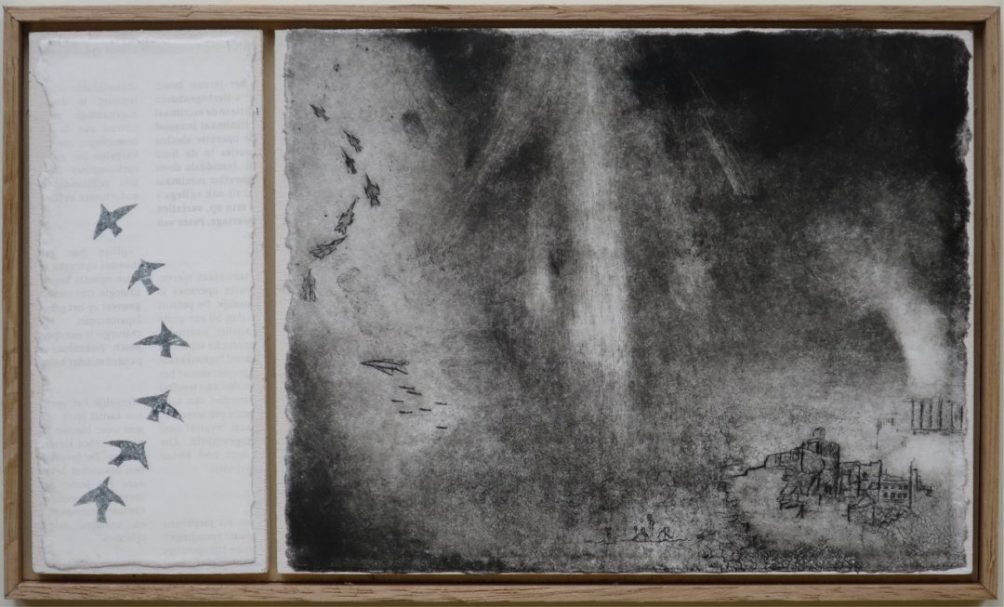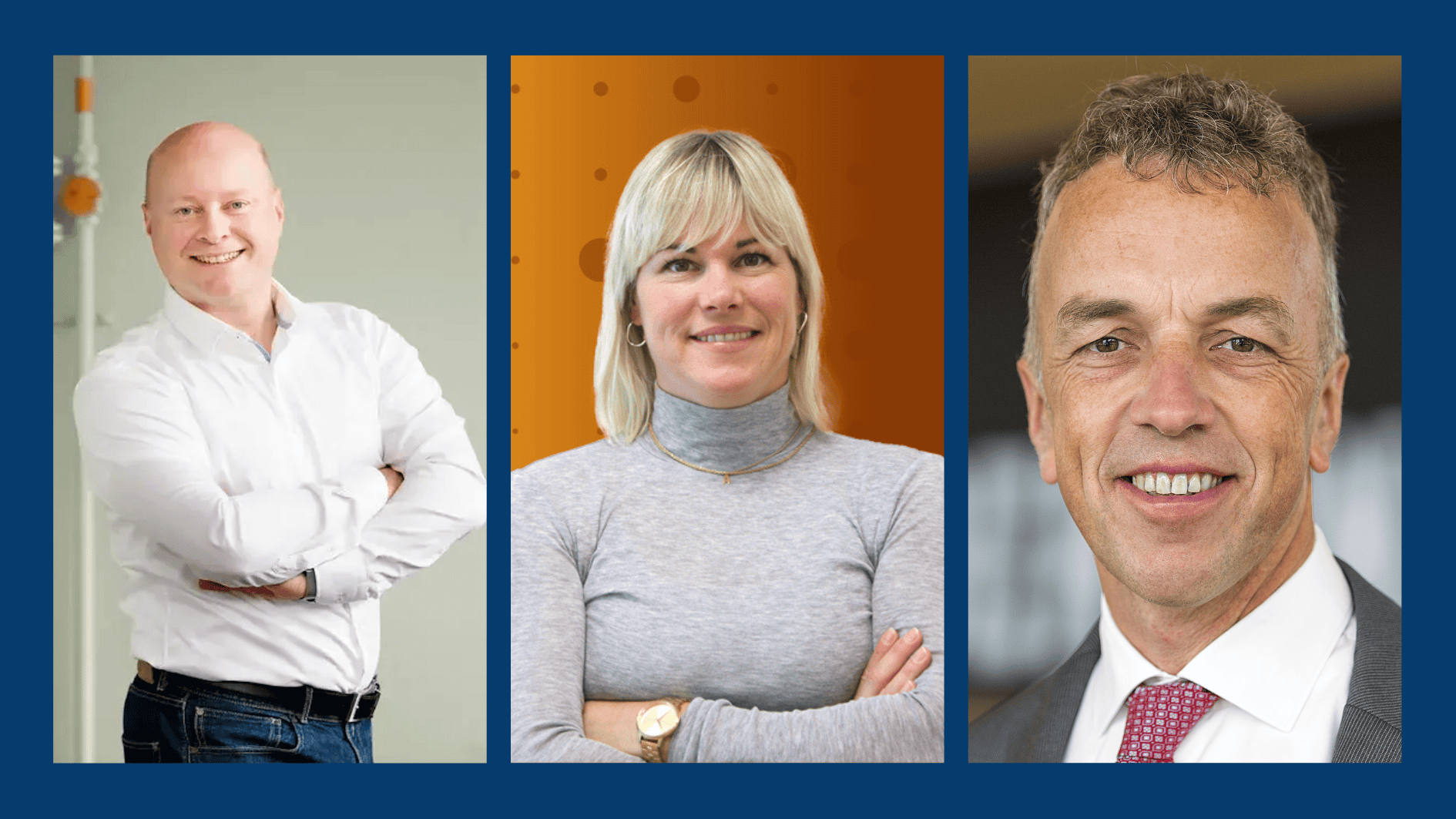
If the Corona crisis makes something clear to us, it is that the solutions of the past no longer work for today’s problems. But to achieve those new solutions and create real innovations that benefit society, something has to change in the way we look at the world. Curiosity, the basis for everything we do at Innovation Origins, is crucial, as the research by Danae Bodewes also shows. In a series of interviews, she talks to curious types who each in their own way provide the building blocks for a curious life. Here is the complete series so far. (NB: this interview is from before the corona pandemic)
Maria Kapteijns (54): visual artist, cultural scientist, and interviewer
For almost 11 years, Maria Kapteijns, herself a visual artist, interviewed many artists for the monthly talk show ‘Eindhoven in Arts’. She noticed that when art is discussed it is often about the end product. While the artists themselves very often focus on the process. Terms such as curiosity, research and coincidence are often used by artists in describing their work process. However, the role of chance or serendipity and deliberately trying out aimlessly are rarely mentioned in the explanatory notes to exhibitions. Curators seem to have a tendency to call it a logical and continuous story. Intrigued by this phenomenon, Maria researched the meaning in art by artists themselves for her master’s thesis in Cultural Studies in 2013. Curiosity and serendipity in the work process turned out to play a major role in the process of forming meaning.
What does curiosity mean to you?
For me, curiosity means getting intrigued quickly and not taking things for granted so quickly. And wanting to know a lot about everything. That’s why I’ve been interviewing all these years. I’m very curious. I interviewed the artists on stage. But the preparation was the most fun. It’s great to walk into an artist’s studio, to browse through his work process, and to be able to ask questions unashamedly.
Curiosity is at the heart of artists who don’t take something for granted. Art is ambiguous; it can be understood in different ways. What seems self-evident is not so self-evident if you look closer at it. This arouses curiosity.
What, for you, is the relationship between curiosity and creativity?
It’s all about intriguing phenomena. Artists get going because something is intriguing. That’s why they get into action. Creativity is thus triggered by curiosity.
How does this express itself in your work process?
Much of my work is about the city; how people move, patterns that arise. This continues to intrigue me endlessly. After all, I never get a conclusive answer. Take carnival. Carnival is intriguing. You can go to the supermarket dressed up in a bear suit, that’s perfectly normal, but the following Thursday it’s suddenly no longer normal. The city becomes a backdrop during carnival. This also happens when PSV plays. The city is no longer that normal city, it has been given a decor function. I’m very curious how that works.
How do you arouse the curiosity of others?
I want to show the estrangement. What exactly is happening? For example, you can arouse curiosity by placing a carnival photo between photos of the rest of the year. Then it stands out. I like upsetting things.

You can see this disruptive in my work passage. This is a long series of etchings, based on photos of festive occasions from which I have made a different story. The series is 26 meters long and about 30 centimeters high. It is a tour. Parades have something ceremonial. I came up with this idea after seeing la tapisserie l’Apocalyps in Angers. It’s a long tapestry, about the last book of the Bible. It’s a grim world with visions, very spooky. The photos of carnival show similarities; how people dress and play roles.
As a visual artist, do you have to be more curious than the average person would be?
Sure. Seeing things as not self-evident, I see in all artists. It is a distinctive thing. Peirce’s theory of semiosis [the process of forming meaning] distinguishes three phases: the first phase in which you see all possibilities, the second phase: you only see things that are being updated, and the third phase: when it becomes a habit. In the third phase you don’t see anything anymore. You no longer see possibilities in your field of vision. Art stimulates your curiosity because it pulls you away from the third phase. You see something special.
I think that’s why curiosity can irritate teachers. It disrupts. You need a different way of teaching to allow curiosity.
What fascination have you had since childhood?
I do feel that I had a fascination related to my current work, but I have never sought words for it. When I was in high school I thought it was crazy that you don’t know who you are and what other people have taught you. What has been learned and what comes out of myself?
How is this fascination reflected in your work?
I find swarming behavior interesting, this is reflected in my work about the city but also in my work about insects in which I have immersed myself. Ants, for example, show intelligent behavior not as individuals but as a group. I find it quite difficult to see and recognize myself as an autonomous being. What are the boundaries of the self and the self?
In your article, you talk about the prepared mind of scientists who made unexpected discoveries. I’m quoting Louis Pasteur: Dans les champs de l’obsérvation le hasard ne favorise que les ésprits préparés. In other words: In the field of observation, happiness favors only the prepared mind.
On your website many different themes and ways pass by in which you shape your thoughts in a visual way. How do you prepare your mind to notice the ‘happiness’ of serendipity?
I’m not doing it on purpose. I do notice when I’m too busy I don’t see enough. Then I plan a day to take a long walk. When I notice that I get numb then I try to take action. Besides, I always have a camera with me. I am always at the ready to photograph something crazy.
There isn’t enough time anyway to discover everything I find interesting.
As a visual artist you exploit your curiosity. Do you also have tricks to keep your curiosity under control?
I recognize it. Taking a different path every so often. I have to set frames. I arrange an exhibition and then I have to finish it even though I am already working on something else in my head. That’s how I attract things from the outside so that I can call myself to order. Even when I don’t have time to figure something out completely, I believe that I will do so later. It has never been a waste of effort. Anyway, there is not enough time to discover everything that I find interesting.
Your thesis was about meaning. We must increasingly work together in an interdisciplinary and multidisciplinary way. What can other disciplines of the arts learn about giving meaning in this more complex setting?
Art has become more conceptual. The world of ideas and methods is being adapted. 40 years ago, as a graphic artist, I would probably have explained the handwriting and the ink. Now artists are less preoccupied with the material. The material becomes more interchangeable. When video works better to express something, you use video. Then you want to learn it too. There is a growing conviction that if you do your best you can use a lot of media. Art becomes more accessible.
It’s about the step before, the realization that you have to give meaning.
You have to adapt your world of ideas and methods. It’s about the step before, the realization that you have to give meaning. When we talk about training good technicians, you have to take a step back. What is technology for? You have to be able to talk about it in a way that users know what they can do with the technology. Within a discipline, there is often a certain way of thinking and certain use of imagery. For example, my partner is a mechanical engineer. I discussed my thesis with him. In his head, he sees my explanation in the form of a flowchart. In this way you have something to gain from each other, so you can learn about other disciplines from each other.
Shaping social involvement is a dilemma

For you, what are the most important challenges we face as a society?
There are two things for me: climate and income inequality on a global scale.
How do you use your fascination and art to contribute to the solution of these challenges?
I find it very difficult to use my work for this. In my project Drifting I work with images of people moving around. This sometimes makes me feel like a poseur. I don’t do anything about it but I do make work about it. It feels as if making work about it doesn’t contribute to the solution but takes advantage of the emotions it evokes. This is a big dilemma. Many artists are really involved. It is very difficult to express this without taking advantage of the sensitivity of the situation and the powerlessness that everyone experiences.








